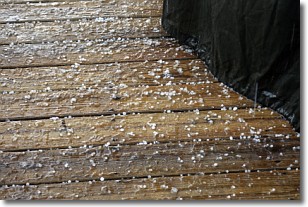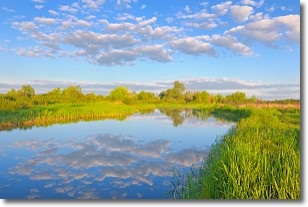Weather Alert in Louisiana
Flood Watch issued May 5 at 3:27PM CDT until May 8 at 7:00PM CDT by NWS New Orleans LA
AREAS AFFECTED: Pointe Coupee; West Feliciana; East Feliciana; St. Helena; Washington; Iberville; West Baton Rouge; East Baton Rouge; Assumption; St. James; St. John The Baptist; Upper Lafourche; St. Charles; Upper St. Bernard; Upper Terrebonne; Lower Terrebonne; Lower Lafourche; Coastal Jefferson; Lower Plaquemines; Lower St. Bernard; Northern Tangipahoa; Southeast St. Tammany; Western Orleans; Eastern Orleans; Northern St. Tammany; Southwestern St. Tammany; Central Tangipahoa; Lower Tangipahoa; Northern Livingston; Southern Livingston; Western Ascension; Eastern Ascension; Upper Jefferson; Lower Jefferson; Upper Plaquemines; Central Plaquemines; Wilkinson; Amite; Pike; Walthall; Pearl River; Northern Hancock; Northern Harrison; Northern Jackson; Southern Hancock; Southern Harrison; Southern Jackson
DESCRIPTION: * WHAT...Flooding caused by excessive rainfall continues to be possible. * WHERE...Portions of southeast Louisiana, including the following parishes, Assumption, Central Plaquemines, Central Tangipahoa, Coastal Jefferson Parish, East Baton Rouge, East Feliciana, Eastern Ascension, Eastern Orleans, Iberville, Lower Jefferson, Lower Lafourche, Lower Plaquemines, Lower St. Bernard, Lower Tangipahoa, Lower Terrebonne, Northern Livingston, Northern St. Tammany, Northern Tangipahoa, Pointe Coupee, Southeast St. Tammany, Southern Livingston, Southwestern St. Tammany, St. Charles, St. Helena, St. James, St. John The Baptist, Upper Jefferson, Upper Lafourche, Upper Plaquemines, Upper St. Bernard, Upper Terrebonne, Washington, West Baton Rouge, West Feliciana, Western Ascension and Western Orleans and southern Mississippi, including the following areas, Amite, Northern Hancock, Northern Harrison, Northern Jackson, Pearl River, Pike, Southern Hancock, Southern Harrison, Southern Jackson, Walthall and Wilkinson. * WHEN...From Tuesday evening through Thursday evening. * IMPACTS...Excessive runoff may result in flooding of rivers, creeks, streams, and other low-lying and flood-prone locations. Creeks and streams may rise out of their banks. Flooding may occur in poor drainage and urban areas. * ADDITIONAL DETAILS... - Heavy rain will move into the area beginning late Tuesday. Four to six inches of rain is forecast across the area during this timeframe, locally higher amounts are possible. - http://www.weather.gov/safety/flood
INSTRUCTION: You should monitor later forecasts and be alert for possible Flood Warnings. Those living in areas prone to flooding should be prepared to take action should flooding develop.
Want more detail? Get the Complete 7 Day and Night Detailed Forecast!
Current U.S. National Radar--Current
The Current National Weather Radar is shown below with a UTC Time (subtract 5 hours from UTC to get Eastern Time).

National Weather Forecast--Current
The Current National Weather Forecast and National Weather Map are shown below.

National Weather Forecast for Tomorrow
Tomorrow National Weather Forecast and Tomorrow National Weather Map are show below.

North America Water Vapor (Moisture)
This map shows recent moisture content over North America. Bright and colored areas show high moisture (ie, clouds); brown indicates very little moisture present; black indicates no moisture.

Weather Topic: What is Sleet?
Home - Education - Precipitation - Sleet
 Next Topic: Snow
Next Topic: Snow
Sleet is a form of precipitation in which small ice pellets are the primary
components. These ice pellets are smaller and more translucent than hailstones,
and harder than graupel. Sleet is caused by specific atmospheric conditions and
therefore typically doesn't last for extended periods of time.
The condition which leads to sleet formation requires a warmer body of air to be
wedged in between two sub-freezing bodies of air. When snow falls through a warmer
layer of air it melts, and as it falls through the next sub-freezing body of air
it freezes again, forming ice pellets known as sleet. In some cases, water
droplets don't have time to freeze before reaching the surface and the result is
freezing rain.
Next Topic: Snow
Weather Topic: What are Stratocumulus Clouds?
Home - Education - Cloud Types - Stratocumulus Clouds
 Next Topic: Stratus Clouds
Next Topic: Stratus Clouds
Stratocumulus clouds are similar to altocumulus clouds in their
fluffy appearance, but have a slightly darker shade due to their additional mass.
A good way to distinguish the two cloud types is to hold your hand out and measure
the size of an individual cloud; if it is the size of your thumb it is generally
an altocumulus cloud, if it is the size of your hand it is generally a
stratocumulus cloud.
It is uncommon for stratocumulus clouds to produce precipitation, but if they do
it is usually a light rain or snow.
Next Topic: Stratus Clouds
Current conditions powered by WeatherAPI.com




